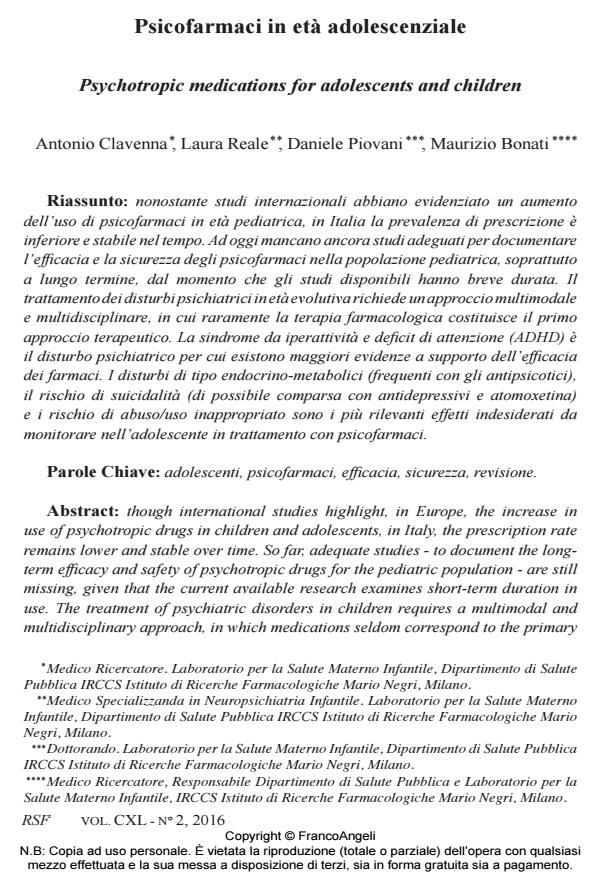Psychotropic medications for adolescents and children
Journal title RIVISTA SPERIMENTALE DI FRENIATRIA
Author/s Antonio Clavenna, Laura Reale, Daniele Piovani, Maurizio Bonarti
Publishing Year 2016 Issue 2016/2
Language Italian Pages 23 P. 79-101 File size 244 KB
DOI 10.3280/RSF2016-002006
DOI is like a bar code for intellectual property: to have more infomation
click here
Below, you can see the article first page
If you want to buy this article in PDF format, you can do it, following the instructions to buy download credits

FrancoAngeli is member of Publishers International Linking Association, Inc (PILA), a not-for-profit association which run the CrossRef service enabling links to and from online scholarly content.
Though international studies highlight, in Europe, the increase in use of psychotropic drugs in children and adolescents, in Italy, the prescription rate remains lower and stable over time. So far, adequate studies - to document the longterm efficacy and safety of psychotropic drugs for the pediatric population - are still missing, given that the current available research examines short-term duration in use. The treatment of psychiatric disorders in children requires a multimodal and multidisciplinary approach, in which medications seldom correspond to the primary approach for treatment. On the other hand, the studies on ADHD point out the evidence on psychotropic medications’ efficacy. Most prescriptions of psychotropic drugs for children and adolescents are considered "off label", i.e. the medications are prescribed in age ranges, dosage and with indications not approved by regulatory authorities. Moreover, children and adolescents taking psychiatric medications, more than adults, may be exposed to higher risks of adverse events such as metabolic and endocrine abnormalities associated with second-generation antipsychotic treatments. Data on long-term efficacy and safety of psychiatric medications is essential to help understand the risk-benefit ratio of psychotropic drugs in children and adolescents.
Keywords: Adolescents, psychotropic drugs, efficacy, safety, review
Antonio Clavenna, Laura Reale, Daniele Piovani, Maurizio Bonarti, Psicofarmaci in età adolescenziale in "RIVISTA SPERIMENTALE DI FRENIATRIA" 2/2016, pp 79-101, DOI: 10.3280/RSF2016-002006